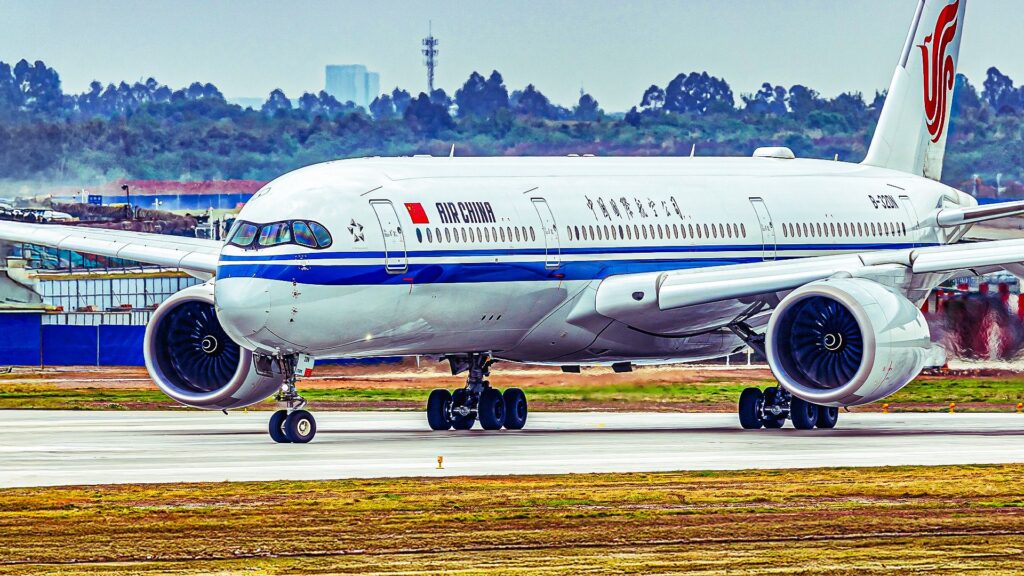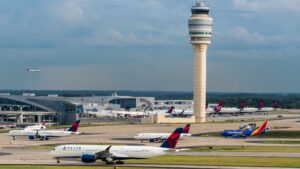
The Trump Administration has proposed new regulations that could significantly alter the competitive landscape for international flights between the United States and China. The proposed rule aims to prevent major Chinese airlines from flying over Russian airspace, a privilege they currently enjoy due to a ban that excludes them from Russian restrictions imposed on Western carriers. This move seeks to address the operational advantages that Chinese airlines have gained since the onset of the Ukraine conflict.
When Russia closed its airspace to airlines from nations aligned with the West following the invasion of Ukraine, it necessitated a drastic shift for US and European airlines. These carriers have been forced to reroute their flights to Asia, taking longer paths that avoid Russian airspace. This change has resulted in increased fuel costs and longer flight times, making it more difficult for these airlines to compete effectively. In contrast, Chinese carriers have continued to operate shorter routes, benefiting from reduced operational costs.
According to Reuters, major Chinese airlines, including China Eastern, have voiced strong opposition to the proposed ban. The airlines argue that such a restriction would add two to three hours to critical flight routes, inflating operational costs and increasing the risk of missed connections. Air China and China Southern echoed these concerns, highlighting that the proposed regulations could necessitate rebooking for thousands of passengers, specifically estimating around 2,800 travelers affected between November 1 and December 31.
The airspace dispute stems from a broader geopolitical context. In 2022, Russia barred US and many foreign airlines from its airspace in response to sanctions from the West. Chinese airlines were not included in this ban and have consequently expanded their market share by providing more efficient services. The Chinese Foreign Ministry criticized the US proposal, stating that it does not support international cooperation.
On the US side, the market for flights to China is primarily dominated by United Airlines, Delta Air Lines, and American Airlines. Each of these airlines is working to rebuild their networks under the current political and operational constraints. United Airlines has resumed nonstop flights from San Francisco International Airport (SFO) to Beijing and Shanghai, while Delta has restored service from Los Angeles International Airport (LAX) to Shanghai using Airbus A350 jets.
The ongoing restrictions on Russian airspace have created significant challenges for US carriers, forcing them to operate longer routes at higher costs. This has hampered their ability to compete against Chinese airlines, which can continue to overfly Russia. Since March 2024, regulators have permitted Chinese carriers to operate up to 50 weekly flights between the US and China, while US airlines have called for a reassessment of capacity increases until competitive conditions improve.
The potential implications of the proposed rule extend beyond mere operational logistics. If implemented, the ban could lead to longer flight times for Chinese and potentially Hong Kong-based carriers, resulting in higher fares and increased operational challenges. Passengers may face longer itineraries and mandatory rebookings. However, the regulation could also level the playing field for US airlines, narrowing the operational gap that has favored their Chinese counterparts since the Russian airspace closures.
In this complex landscape, Cathay Pacific presents an intriguing case. Although not a mainland Chinese airline, it can still operate flights over Russian airspace. This ability grants it access to shorter routes, thereby reducing operating costs compared to US carriers. The initial proposal to exclude Cathay Pacific from the ban has raised concerns among US airlines, which argue that including all carriers is essential for true competitive parity.
The current policy debate reflects a significant shift in the dynamics of international air travel, influenced by geopolitical tensions and operational constraints. Trade groups representing US-based airlines have expressed support for the proposed ban, urging regulators to align capacity with travel demand and ensure fair competition.
Ultimately, the proposed restrictions could reshape the market for air travel between the United States and China, fostering a more equitable environment for US carriers. However, the long-term resolution of the airspace issues may hinge on broader geopolitical developments, particularly the ongoing conflict in Ukraine. As the situation evolves, the potential reopening of Russian airspace for all carriers remains uncertain, dependent on major international diplomatic progress.







